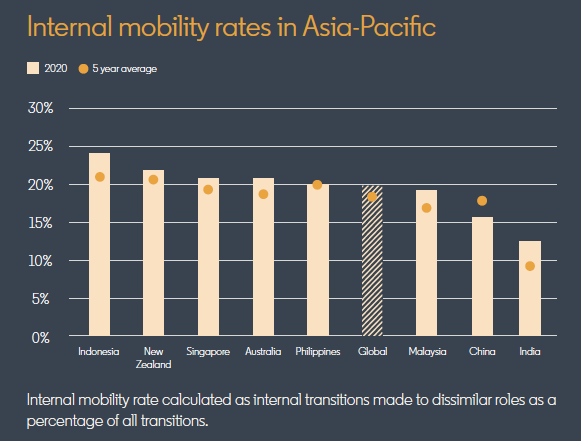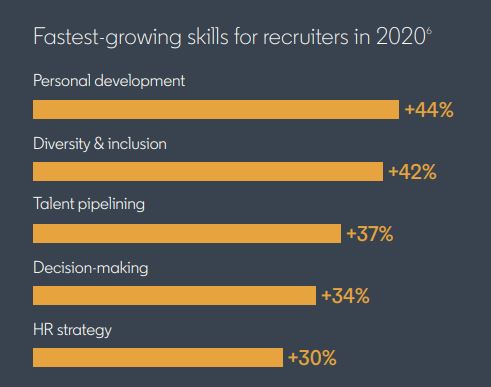Virtual recruiting is the new norm: LinkedIn report

LinkedIn recently published ‘The Future of Recruiting: Asia-Pacific Report'. The report captures insights on the evolving landscape of recruitment in the emerging post-pandemic workplace, with responses from talent professionals spread over 28 countries, keeping a key focus on the APAC (Australia, India, Singapore and rest of Southeast Asia) region. The report also leveraged insights from exclusive data points from the LinkedIn platform and in-depth interviews with talent leaders around the world. Through this feature, we will tap into the recurring themes as well as individual focus areas across the region, and the key predictions for the future of recruiting.
Interestingly, beyond common themes, while Australia is maintaining a consistent focus in amplifying diversity through its talent pipeline, India has a clear focus on upskilling, with Singapore and the SEA region at large prioritising internal mobility. Together, these individual focus areas paint the arch of the recruitment landscape in 2021 and beyond.
Read on for a more in-depth take on the report findings.
The rise of internal mobility
What began as a concept of internal job postings has now grown into full-fledged internal mobility ⎼ a key driving force for recruitment in times to come. The dynamic business climate of today has pushed organisations and employees to take up roles and responsibilities beyond what would be expected of them in a traditional setup. The scope of internal mobility, however, is much more than that, in a manner that not only encourages employees to add to their skill sets and take on new roles, but in the long-term, creates a plethora of opportunities for the employer to design a workforce strategy that develops, engages, and retains talent.

LinkedIn data found that organisations that engage in high levels of internal hiring have witnessed the likely tenure of employees increase by 41 per cent.
That bodes well for organisations given the 15 per cent increase in internal mobility in APAC since COVID-19. In 2020, Indonesia, New Zealand, Singapore, Australia and the Philippines saw higher internal mobility rates than the global rate of 19.5 per cent, a positive indicator that companies in these countries are leading the way in driving internal mobility.
At a time when the war for talent is on the rise with inadequate budgets to invest in employer branding, by providing employees with horizontal growth opportunities internally, organisations can benefit tremendously.
Upskilling recruiters for remote hiring
There is a distinct difference in how APAC recruiters see their roles evolve post-COVID-19: 74 per cent surveyed thought employee engagement would become a much bigger part of their role, compared with 67 per cent globally. Beyond engaging employees, the report noted that advising the business on workplace planning is becoming increasingly important for 71 per cent of Asia-Pacific talent professionals.
Despite persisting challenges, in APAC, the amount of time recruiters spend on learning has more than quadrupled from 2019. ‘Adaptability’ has also been identified as the most important skills for recruiters over the next year by surveyed talent professionals around the world. These are the top five skills that are rapidly gaining significance among recruiters in 2020:

Making diversity a living reality through accountability
More organisations are now leveraging the distributed workforce model to tap into diverse talent pools, with remote jobs resulting in over 20 per cent more geographical diversity among applicants.
Given the nature of remote work, skills have also taken a priority over other factors when assessing talent.
The report found that the renewed focus on Diversity & Inclusion (D&I) is no longer just on the number of people hired, but also in engaging and retaining a diverse workforce. With greater responsibility on hiring managers to bring in more diverse candidates in the talent pipeline, the D&I charter is on its way to being both renewed and reinstated.
Of all the regions surveyed, Australia emerged as a regional leader when it comes to diversity. Globally, Australia is second only to the United Kingdom when it comes to the number of diversity, inclusion and belonging roles per 10,000 employees.
Gearing up for virtual recruiting
Affirming the evolving landscape of virtual hiring, 78 per cent of APAC’s talent professionals agree virtual recruiting will continue post COVID-19. Organisations now need to rethink their approach to hiring.
While some roles might not require in-person meetings or interviews, there are others that mandate the same. How are employers planning for this mix in the hiring model? Additionally, are employers equipped with the right technology to enable virtual hiring in the long-term? Will that technology enable recruiters to deliver the experience expected of them?
At a time when budgets continue to be curtailed, the onus of carrying the employer brand to the talent market rests on the shoulders of recruiters, as well as employees. Authenticity here plays a significant role in the effectiveness of such communication.
As mentioned in the report, “A member’s post will gain three times the traction than a company’s. If they’re proud of their employer, they can show that their company puts people first.”
This suggests that empowering your talent to be your company ambassadors is one of the most authentic ways to demonstrate your employer brand.
Takeaways
From where the world stands right now, a hybrid work model is emerging with the scales favouring virtual for an indefinite time period. While 2020 was an overnight shift for sustenance, 2021 will be the year of shifting gears to recovery and growth. To successfully do that, talent will play a critical role. The preparation and efficiency with which organisations are able to tap into the future of acquiring, onboarding, engaging and developing talent will determine their ability to transition from sustenance to recovery to sustainable progress.
If you’re interested to find out all six predictions of the future of recruiting and get further insights, read the full report here.















